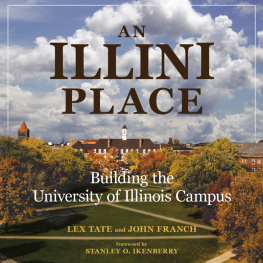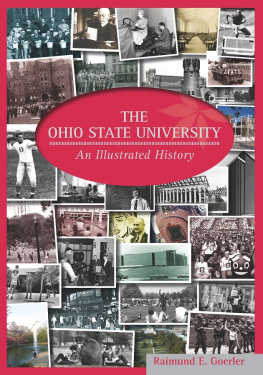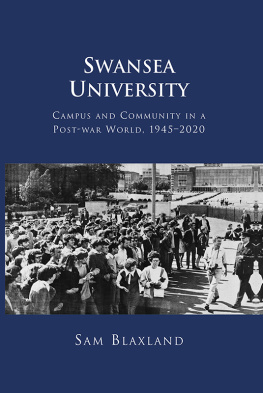Lex Tate - An Illini Place: Building the University of Illinois Campus
Here you can read online Lex Tate - An Illini Place: Building the University of Illinois Campus full text of the book (entire story) in english for free. Download pdf and epub, get meaning, cover and reviews about this ebook. year: 2017, publisher: University of Illinois Press, genre: Romance novel. Description of the work, (preface) as well as reviews are available. Best literature library LitArk.com created for fans of good reading and offers a wide selection of genres:
Romance novel
Science fiction
Adventure
Detective
Science
History
Home and family
Prose
Art
Politics
Computer
Non-fiction
Religion
Business
Children
Humor
Choose a favorite category and find really read worthwhile books. Enjoy immersion in the world of imagination, feel the emotions of the characters or learn something new for yourself, make an fascinating discovery.
- Book:An Illini Place: Building the University of Illinois Campus
- Author:
- Publisher:University of Illinois Press
- Genre:
- Year:2017
- Rating:4 / 5
- Favourites:Add to favourites
- Your mark:
An Illini Place: Building the University of Illinois Campus: summary, description and annotation
We offer to read an annotation, description, summary or preface (depends on what the author of the book "An Illini Place: Building the University of Illinois Campus" wrote himself). If you haven't found the necessary information about the book — write in the comments, we will try to find it.
Why does the University of Illinois campus at Urbana-Champaign look as it does today? Drawing on a wealth of research and featuring more than one hundred color photographs, An Illini Place provides an engrossing and beautiful answer to that question. Lex Tate and John Franch trace the story of the universitys evolution through its buildings. Oral histories, official reports, dedication programs, and developmental plans both practical and quixotic inform the story. The authors also provide special chapters on campus icons and on the buildings, arenas and other spaces made possible by donors and friends of the university. Adding to the experience is a web companion that includes profiles of the planners, architects, and presidents instrumental in the campuss growth, plus an illustrated inventory of current and former campus plans and buildings.|
CoverTitleCopyrightContentsForeword by Stanley O. IkenberryInvitation to the Companion Web SiteCHAPTER 1. Prairie to Petascale: An OverviewCHAPTER 2. In the Beginning: Pre-1919CHAPTER 3. Growth and Transformation: 1920-1933CHAPTER 4. Stability and Transition: 1934-1954CHAPTER 5. Building Boom and Bust: 1955-1984CHAPTER 6. Plans, Partners, and Big Ideas: 1985-2015CHAPTER 7. The Neighborhood: Sleep, Eat, PrayCHAPTER 8. Gifts and Givers: Donor BuildingsCHAPTER 9. IconsSourcesIndex|
Ours and every generation owes a debt to those who went before. An Illini Place enables us to grasp a sense of how it all began, the obstacles that were overcome, the opportunities that were seized, the people who made it happen, and the vision and values that sustained it.from the Foreword by Stanley O. Ikenberry, President Emeritus of the University of Illinois
The colorful history of the University of Illinois (U of I) campus explored in this lavishly illustrated and pithy history. By virtue of its expert research, its thoughtful organization and writing, and its beautiful illustrations, it takes its place alongside other treatments of important institutions and landmarks of Illinois. The authors have achieved an admirable synthesis of treating the old and new, of the venerable structures (razed and remaining) and the modern construction and more recent architecture. An affectionate guidebook to this prairie cathedral and its plucky evolution. Journal of the Illinois State Historical Society
|
Lex Tate is an adjunct lecturer in journalism and advertising at the University of Illinois at Urbana-Champaign, and served as associate director of the University of Illinois Office for University Relations. John Franch is the author of Robber Baron: The Life of Charles Tyson Yerkes.
Lex Tate: author's other books
Who wrote An Illini Place: Building the University of Illinois Campus? Find out the surname, the name of the author of the book and a list of all author's works by series.









 This book is printed on acid-free paper.
This book is printed on acid-free paper.